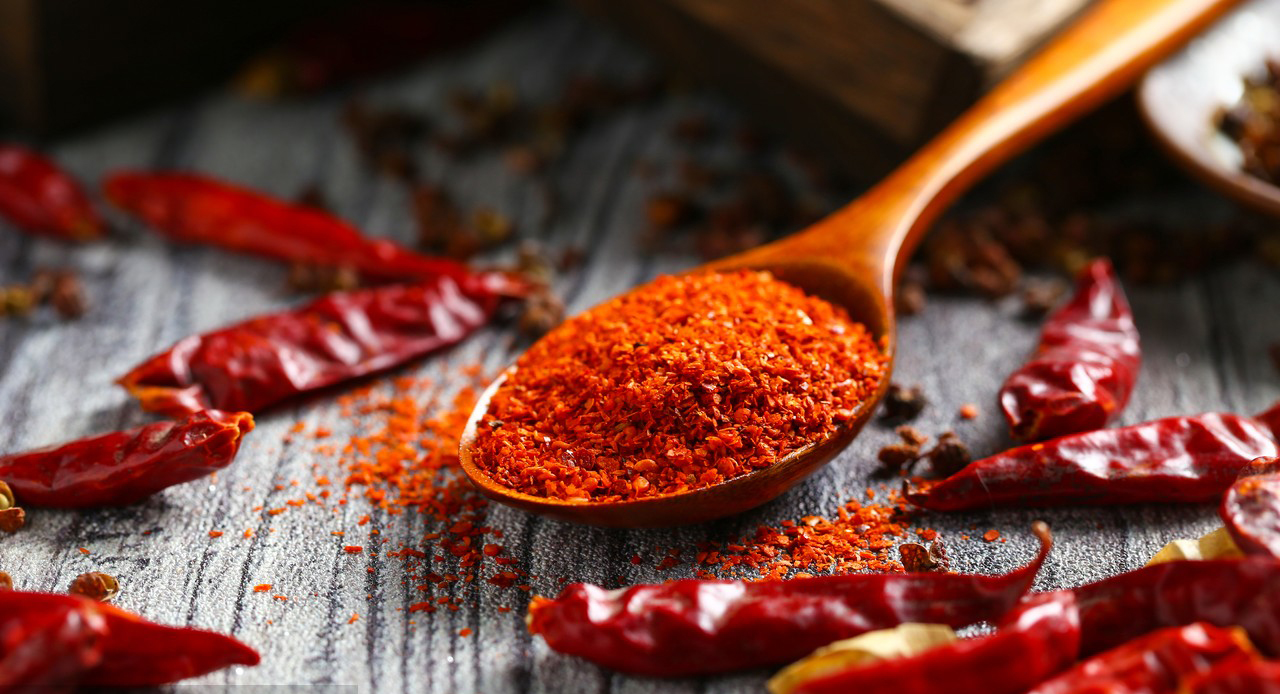
Privacy statement: Your privacy is very important to Us. Our company promises not to disclose your personal information to any external company with out your explicit permission.
News
2023-09-30
Recently held the second China Digital Chili Industry Development Conference released data show that China is the world's largest consumer of chili pepper, while the annual output of chili peppers ranked first in the world, planting coverage of the country's 28 provinces (districts, municipalities), the industry continues to expand.
China accounts for nearly half of global chili pepper production

Chili pepper, also known as spicy eggplant and sea pepper, is an important vegetable species. Data show that the current annual planting area of chili peppers in China is more than 30 million mu, accounting for about 10 percent of the country's vegetable planting area, which is at the forefront of all types of vegetables.
"From being used only for ornamental purposes when it was introduced to China more than 400 years ago, to its later edible and medicinal uses, the diverse value of chili peppers has been continuously discovered, and the scale of cultivation has expanded." Lin Qiao, deputy research librarian of the Institute of Agricultural Information of the Chinese Academy of Agricultural Sciences, introduced that chili peppers are rich in nutrients, diverse in flavor and growth, and can be eaten fresh or processed into products such as chili sauce, dried chili peppers and chili oil; in addition to its edible value, chili peppers also have important economic and social values, and capsaicin, capsaicin and capsaicinoids have applications in medical, food and industrial fields. In recent years, the global chili pepper planting area and production has been growing steadily, and China's chili pepper industry has also entered a rapid development stage.
According to the statistics of the Food and Agriculture Organization of the United Nations, more than 30% of global chili peppers are planted in China from 2000 to 2021, and China's chili peppers planted area accounts for 36.72% of the global planted area in 2021, which is about 5.59 percentage points higher than that in 2000, and it is the major country in the world for chili peppers planting. In terms of production, both global and Chinese chili pepper production have increased significantly in recent years, with China accounting for nearly half of the global production, making it the world's largest chili pepper major producer.
Not only to meet the domestic demand, China's chili peppers are also on the table of global consumers. According to reports, globally, chili peppers and their products have more than 1,000 kinds, more than 2/3 of the countries or regions planting or eating chili peppers. Currently, China is one of the major exporters of chili peppers, which are categorized into dried and fresh chili peppers, including unground dried chili peppers, ground chili peppers, and fresh or frozen chili peppers.
According to the official website of the Agricultural Trade Promotion Center of the Ministry of Agriculture and Rural Affairs, China's chili pepper exports were valued at $1.7 billion in 2022, up 11.6% year-on-year. Among them, the export value of dried chili peppers is 1.56 billion U.S. dollars, up 8.1% year-on-year; the export value of fresh chili peppers is 140 million U.S. dollars, up 71.2% year-on-year; the top three export markets for China's chili peppers are the U.S., Japan, and Spain, in that order, which account for a total of 41.1% of the total chili peppers' export value together.
At present, the rapid development of the pepper industry around, but also facing product homogenization, germplasm resources to tap the lack of utilization, high-end product competitiveness needs to be improved and other issues, the relevant localities should also further give play to local characteristics, optimize the layout of the industrial structure in accordance with local conditions, to cultivate more resistant to disease, adapted to the mechanization of production and harvest of varieties, to enhance the entire level of mechanization of the production and management of chili peppers. At the same time, the development of more pepper products to meet the needs of different markets, improve brand reputation, recognition, brand effect to achieve value-added pepper products, industry income.
Hunan Insen Biotech mainly exports natural and synthetic capsaicinoids. Capsaicin, also known as Capsaicin, white crystalline powder, belongs to organic compounds, is an extremely pungent vanillamide alkaloid, the chemical name is anti-8-methyl-N-vanillin-6-nonenyl amide, the molecular formula is C18H27NO3. It has the functions of antibacterial, antioxidant, anti-tumor, anti-inflammatory and analgesic, and it is widely used in the fields of food and health care, pharmaceuticals, planting, aquaculture, paint industry and military, etc. It has high quality and high value-added properties. military and other fields, with high application value.
Share to:

Privacy statement: Your privacy is very important to Us. Our company promises not to disclose your personal information to any external company with out your explicit permission.

Fill in more information so that we can get in touch with you faster
Privacy statement: Your privacy is very important to Us. Our company promises not to disclose your personal information to any external company with out your explicit permission.